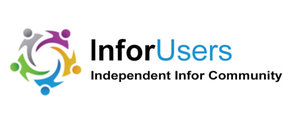Timely Identification of High-Risk Patients to Minimize Healthcare Costs
As the healthcare reimbursement model moves to value-based reimbursement, it is imperative that healthcare organizations identify high-risk patients for appropriate care services. CMS has implemented a star rating system to drive Hospital Compare, which focuses on the provider’s ability to deliver on outcomes, benchmarks, and quality indicators for reported services. These ratings are provided to consumers to help them make decisions on which providers they want for healthcare services.
Healthcare organizations are using predictive analytics for at-risk patient populations to identify high-risk patients who are at risk for needing emergency services, for readmission from a recent encounter of care, or for noncompliance with medication administration. Once high-risk patients are identified, care plans can be developed to treat these patients more effectively. A recent study of complex care programs for Medicaid patients demonstrated these efforts can reduce overall medical spending by 37% and inpatient service utilization by 59%.
After identifying high-risk patients, the providers can also begin to craft healthcare delivery programs specific to chronic illness or post–acute care relative to remote patient monitoring, homecare services, virtual care and telemedicine encounters, and medication compliance coaching. Repositioning healthcare resources to effectively treat high-risk patients will require an accurate prediction of populations needing new digital healthcare services. Failure to accurately predict and identify high-risk patient needs will place a healthcare organization at a significant disadvantage as we move to at-risk contracts related to value-based reimbursement.
AI Predictive Models Integrated into Physician Workflows
CMS has created the AI Health Outcomes Challenge to drive AI innovation and development for identifying potential unplanned inpatient and skilled nursing facility admissions as well as adverse events. Stage 2 of this challenge was to identify seven finalists from the original Stage 1 participants that demonstrated the highest levels of innovation that will likely deliver new AI solutions to address the challenge issues. The seven finalists are Ann Arbor Algorithms (Sterling Heights, MI), ClosedLoop.ai (Austin, TX), Deloitte Consulting, LLP (Arlington, VA), Geisinger (Danville, PA), Jefferson Health (Philadelphia, PA), Mathematica Policy Research, Inc. (Princeton, NJ), and the University of Virginia Health System (Charlottesville, VA). The finalists submitted solutions that predicted a variety of outcomes including heart failure, pneumonia, COPD, and other high-risk conditions. The finalists were evaluated by members of the American Academy of Family Physicians examining the visual displays and accuracy of the results generated by the finalist solutions.
The value of these AI based solutions will be realized in well-designed integration with the EHR solutions that are used by the physicians when evaluating patient outcomes or preparing for patient encounters. As additional data is captured on high-risk patients, the need to be able to further tune the AI algorithms by the providers will be necessary to continue to improve outcomes and quality of care while reducing delivery costs. This will drive evidence-based medicine models that drive costly healthcare delivery variance from the system.
Identification of Patient Risk Drives Patient-Focused Care
Appropriate clinical decision support alerts and notifications for patients can improve healthcare delivery if they are appropriately embedded in the physicians' EHR workflow. Alerts relative to the clinical risk of patients across modalities of care will provide another layer of patient safety while improving outcomes and patient satisfaction. Knowing the challenges of high-risk patients prior to or during an encounter or virtual visit will allow physicians to develop a care plan that results in expected outcomes that control healthcare delivery costs in at-risk contracts. Achieving desired outcomes for high-risk patient populations will improve CMS Star ratings that drive consumer selections for provider services.
CMS AI Health Outcomes Challenge Commercial Solutions
While the CMS AI Health Outcomes Challenge project identified seven finalists, a few have commercially available platforms that are likely to be challenged by the solutions delivered by Stage 2 consultants and healthcare organizations.
Success Factors
- The evaluation of AI solutions for identifying high-risk patients should provide insights into the training modules used to generate the algorithms and how these models can be updated.
- AI algorithms for high-risk patient identification should be integrated into EHR physician workflows, preferably using FHIR APIs.
- Commercial solutions should provide AI algorithm libraries that can be shared between customers to drive continuous improvements and accuracy of algorithms.
Summary
Advancing AI technologies to identify high-risk patients for targeted care delivery solutions will result in higher quality care, improved outcomes, and increased patient satisfaction. These factors will become key components of patient-focused care as the industry moves to value-based reimbursement. The ability to identify high-risk patients related to upcoming services will support patient engagement communications that will enable the patients to be better prepared for their healthcare encounter. Additional follow-up care communications, encounter scheduling, medication management and diagnostic testing can also be coordinated to the benefit of the patients and physicians.
A bonus for this technology is the ability to identify previously unknown high-risk patients, and that will enable early interventions for treating their chronic disease conditions. Early detection of chronic diseases yields significant cost savings and reduces morbidity and mortality. Using AI to continuously screen patient data from EHRs is much more proactive and inclusive than conducting annual screening surveys for patient or employee populations.
Photo Credit: Adobe Stock, kras99


